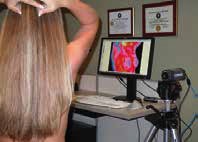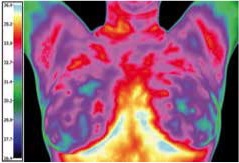Interview Dr. Robban Sica – Breast Cancer Awareness Month
 October is Breast Cancer Awareness Month. In recognition of this national event, I spoke with Robban Sica, MD on the topic of preventative medicine and breast cancer screening.
October is Breast Cancer Awareness Month. In recognition of this national event, I spoke with Robban Sica, MD on the topic of preventative medicine and breast cancer screening.
Dr. Sica is an integrative and holistic medical practitioner with decades of experience. Posted on our website, readers will find an informative article by Dr. Sica on Infrared Mammography. I’d like to delve a little deeper into this procedure as well as other issues regarding breast cancer.
Dr. Breiner: Hello Robban, I’ve had the pleasure of knowing, as well as working with you, for many years.
Before we begin, I would like to ask readers to take a few minutes to read your informative article on the use of Infrared Mammography in breast cancer detection and prevention to lay the groundwork for some of my questions.
 Dr. Sica: Hi Mark, I’ve been using Infrared Mammography (also known as breast thermography or thermology) for almost 10 years in my practice. I believe it is a far superior screening tool for a number of reasons. It is non-invasive, there is no radiation, and it can be repeated as many times as necessary without any risk. Screening can be done effectively at any age (and we are seeing younger and younger women with breast cancer). It is more sensitive in women who have had implants or other breast surgeries and especially in women with dense breasts (75% of women before menopause and at least 25% after menopause).
Dr. Sica: Hi Mark, I’ve been using Infrared Mammography (also known as breast thermography or thermology) for almost 10 years in my practice. I believe it is a far superior screening tool for a number of reasons. It is non-invasive, there is no radiation, and it can be repeated as many times as necessary without any risk. Screening can be done effectively at any age (and we are seeing younger and younger women with breast cancer). It is more sensitive in women who have had implants or other breast surgeries and especially in women with dense breasts (75% of women before menopause and at least 25% after menopause).
Dr. Breiner: Since this screening does not use X-ray radiation, which has been shown to actually cause cancer, obviously Infrared Mammography is a noninvasive safer choice, but how accurate is it in picking up abnormal tissue? Are there any statistics regarding the accuracy of Infrared Mammography vs. X-ray Mammograms?
Dr. Sica: Studies have shown that thermography using the proper technique has a diagnostic sensitivity of approximately 95% and a diagnostic specificity of approximately 90%. Considering X Ray Mammography misses up to 50% of cancers in women with dense breasts, those are impressive statistics. In addition, thermologic changes can be noted 5-8 years before the cancer develops into a mass big enough to pick up even with MRI. Seeing problematic areas that early means we can use preventive strategies to reverse cellular changes.
Dr. Breiner: Can you describe the testing procedure and what you are looking for?
 Dr. Sica: Infrared testing is a very sensitive temperature picture. While the patient does need to disrobe from the waist up, there is no contact with the breast, no compression, pain, or radiation. Unlike other types of breast imaging such as mammography, we are looking for changes in temperature, not simply a lump. The basis of this test is that cancer cells demand more blood supply from the surrounding tissues, causing a localized area of increased temperature which is able to be identified long before a mass can be felt or seen on Mammograms.
Dr. Sica: Infrared testing is a very sensitive temperature picture. While the patient does need to disrobe from the waist up, there is no contact with the breast, no compression, pain, or radiation. Unlike other types of breast imaging such as mammography, we are looking for changes in temperature, not simply a lump. The basis of this test is that cancer cells demand more blood supply from the surrounding tissues, causing a localized area of increased temperature which is able to be identified long before a mass can be felt or seen on Mammograms.
Dr. Breiner: Do you interpret the results of the Infrared Mammography or are there experts that do this?
 Dr. Sica: Our images are securely data-streamed to the highly trained thermologists at ThermaScan, the top thermography company in the US. The images are compared from right breast to left breast as well as before and after a cold challenge for asymmetry. Various types of asymmetry are scored to assess the scan for breast cancer risk as well as other types of breast disease. The scoring system rates from TH-1 to TH-5, with 1 being normal and 5 being highly suspicious.
Dr. Sica: Our images are securely data-streamed to the highly trained thermologists at ThermaScan, the top thermography company in the US. The images are compared from right breast to left breast as well as before and after a cold challenge for asymmetry. Various types of asymmetry are scored to assess the scan for breast cancer risk as well as other types of breast disease. The scoring system rates from TH-1 to TH-5, with 1 being normal and 5 being highly suspicious.
Dr. Breiner: How often do you recommend Infrared Mammography screenings be done?
Dr. Sica: If the first exam is normal (TH-1 or TH-2) then generally we retest at 6 to 12 months and annually thereafter. If it is TH-3, then we generally recommend some preventive measures and a follow up study at 4-6 months. This is generally a minor risk category but TH-3 exams should be followed to ascertain that it is an individual asymmetric variation and not something that is progressing. TH-4 and TH-5 tests are generally referred for additional radiologic testing.
Dr. Breiner: If a woman has Stage I breast cancer, that has been confirmed upon biopsy, do you work on reversing it, and then rechecking it with a follow-up Infrared Mammography scan before recommending surgery?
Dr. Sica: Obviously that is the choice of the woman herself, once she understands all of her risks and options. I have had several women who reverted from a TH-5 to a normal exam with detox and other natural therapies Other women have chosen to undergo a lumpectomy since the diagnosis was made early enough.
Dr. Breiner: What type of dietary changes do you recommend for a woman with breast cancer?
Dr. Sica: First, I always recommend avoiding sugar and refined carbohydrates that feed cancer cells. An alkalinizing diet with lots of vegetables and reducing excess protein and carbs also slows down cancer growth that is highly acidic. Eating organically and drinking pure water is essential since there are so many xeno-estrogens in the environment that accelerate cancer growth, if not causing it to begin with. There is more and more evidence that a properly done ketogenic diet that starves the cancer cells of sugar, cancer’s only energy source, is beneficial. That work was done by Thomas Seyfried, PhD and I recommend his book, Cancer is a Metabolic Disease.
Dr. Breiner: Do you have a supplement protocol for breast cancer patients?
Dr. Sica: I individualize protocols for each patient with a variety of useful herbal and nutritional supplements. Testing in order to optimize hormone metabolism and balance is important. Iodine is a critical nutrient for breast health as is Vitamin D3 for immune support.
Dr. Breiner: Do you have any other therapies or recommendations to reverse or prevent breast cancer?
Dr. Sica: Intravenous Vitamin C therapy with or without other nutrients is very promising. I have also used IV Iodine in fibrocystic disease and that is very helpful. PEMF (pulsed magnetic therapy) aids in bringing more oxygen and nutrients to tissues. Oxygen is very important, as cancer cells thrive in low oxygen environments, thus hyperbaric oxygen, exercise with oxygen and other oxidative therapies are beneficial.
Dr. Breiner: What is your opinion about women with Stage I or II estrogen-dependent breast cancers with respect to prophylactically undergoing a full hysterectomy and bilateral breast removal?
Dr. Sica:I believe this type of invasive surgery to be really extreme. I am not sure that the assumption that a woman’s naturally occurring hormones, estrogen and progesterone are the cause of cancer is accurate. If it were, wouldn’t breast cancer be a disease of premenopausal women? In fact, it is only more recently with the wide spread use of oral contraceptives, which are synthetically altered hormones, as well as with widespread exposure to toxins called xeno-estrogens, which mimic estrogen, that younger and younger women are being diagnosed with breast cancer.
Let me explain, normal breast tissue has receptors for both estrogen and progesterone, so of course these receptors would occur on breast cancer cells. Estrogen has a stimulatory effect on breast tissue, which is why balancing the hormonal metabolism is important. The evidence doesn’t support the theory that naturally occurring estrogen causes cancer; however, evidence clearly shows that xeno-estrogen toxins in pesticides and plastics do. Other evidence supports that naturally occurring hormones, such as estriol and progesterone, convey a preventive effect.
Interestingly, the more abnormal and aggressive tumors actually de-differentiate and lose the hormone receptors. The receptor negative cancers are the more dangerous types.
Dr. Breiner: As a Whole-Body Dentist I am aware of the relationship of the mouth to the rest of the body. In my book, Whole-Body Dentistry I have written about the concerns of root-canal procedures and the associated toxins. Dr. Rau, a noted integrative physician from Switzerland and Dr. Speckhart, a retired oncologist from Virginia, say that almost every woman they have seen with breast cancer has had a root canal on the same side as the cancer. Have you noticed this association?
Dr. Sica: I agree and I have also noted correlation between mercury fillings and cancer, particularly oral cancer. Of course, years ago a Swiss study demonstrated that the more chelation (to remove heavy metals) a person had, the lower the cancer risk. The problem is that dentists and doctors seldom talk (except us!) and compare notes. Next March, the International College of Integrative Medicine (www.icimed.com) along with the two holistic dental associations, IAOMT and IABDM with the American Academy of Environmental Medicine are co-sponsoring a joint conference on how health is impacted by dentistry and vice versa. It promises to be an amazing event in integrative medicine and dentistry.
Dr. Breiner: Naturally, it is best to prevent breast cancer. Here at our health center, we have many unique approaches and modalities in helping the body with detoxification. Would you agree that this would be a natural first step in prevention of any cancer?
Dr. Sica: Yes, detoxification is critical in these toxic times! I’ve always felt that it is the total load of stressors on your system that determine whether your system can deal with it. When you are “over the top” of your health reserves, look out…some disease process can get a foothold!
Dr. Breiner: Thank you Robban. Is there anything else you would like to add?
 Dr. Sica: I think one of the key issues is insuring there is optimal lymphatic flow through the breast. Studies have shown that women who wear underwire bras have higher risk of breast cancer due to compression and inhibiting lymphatic flow. Beyond massage, just simply not wearing a bra 24-7 can be life saving. Even better, do some exercise or Rebounding without a restrictive bra to get life-giving oxygen to the breast and get the lymph moving!
Dr. Sica: I think one of the key issues is insuring there is optimal lymphatic flow through the breast. Studies have shown that women who wear underwire bras have higher risk of breast cancer due to compression and inhibiting lymphatic flow. Beyond massage, just simply not wearing a bra 24-7 can be life saving. Even better, do some exercise or Rebounding without a restrictive bra to get life-giving oxygen to the breast and get the lymph moving!
If you are interested in having an Infrared Mammography scan, and live near our office location, please call Whole-Body Medicine (wholebodymed.com) at 203-371-0300 ext 2 to inquire about scheduling this procedure.
© 2016, Mark A. Breiner, DDS
The information presented is for educational purposes only. Please consult a qualified dentist or health practitioner for diagnosis and treatment.


